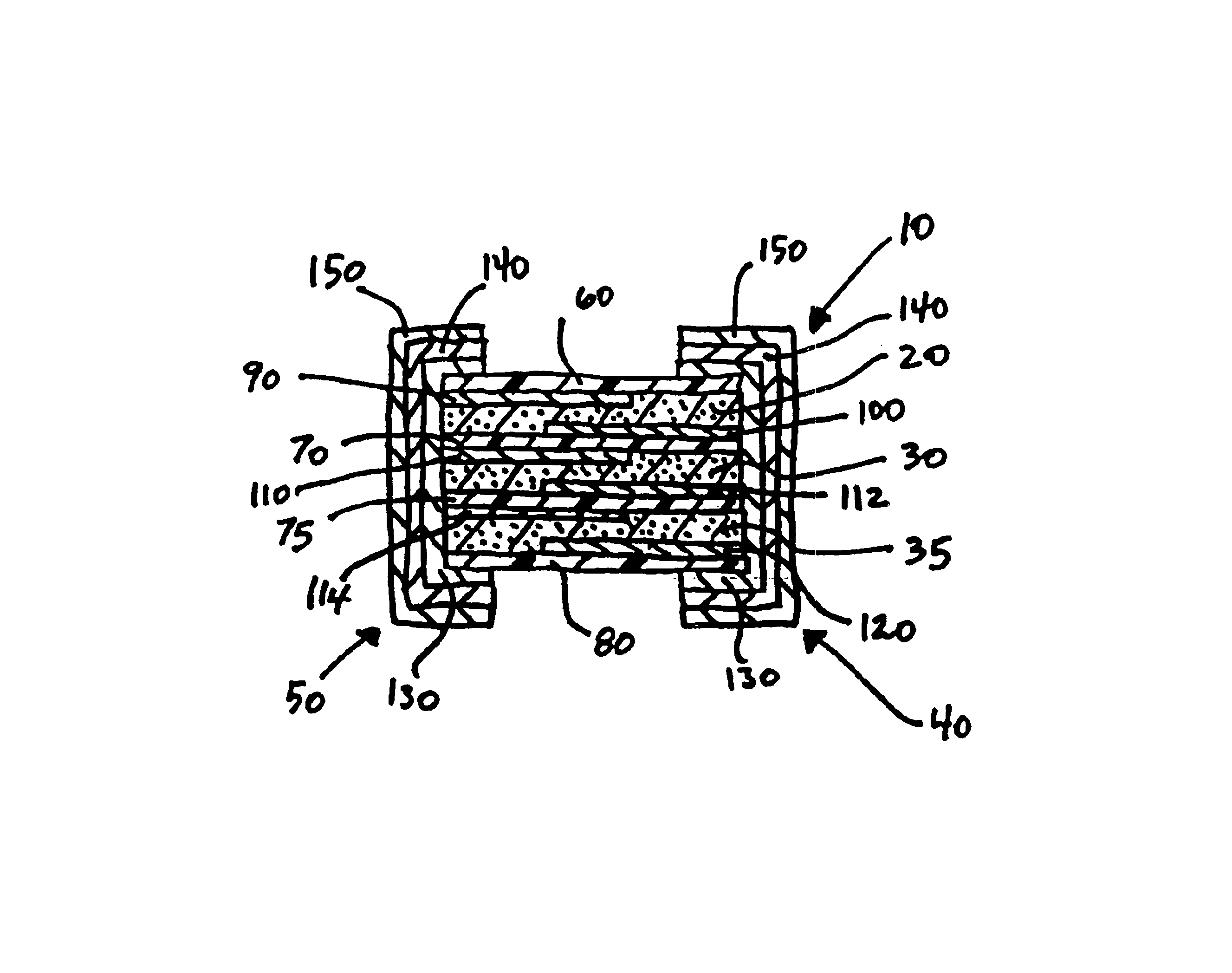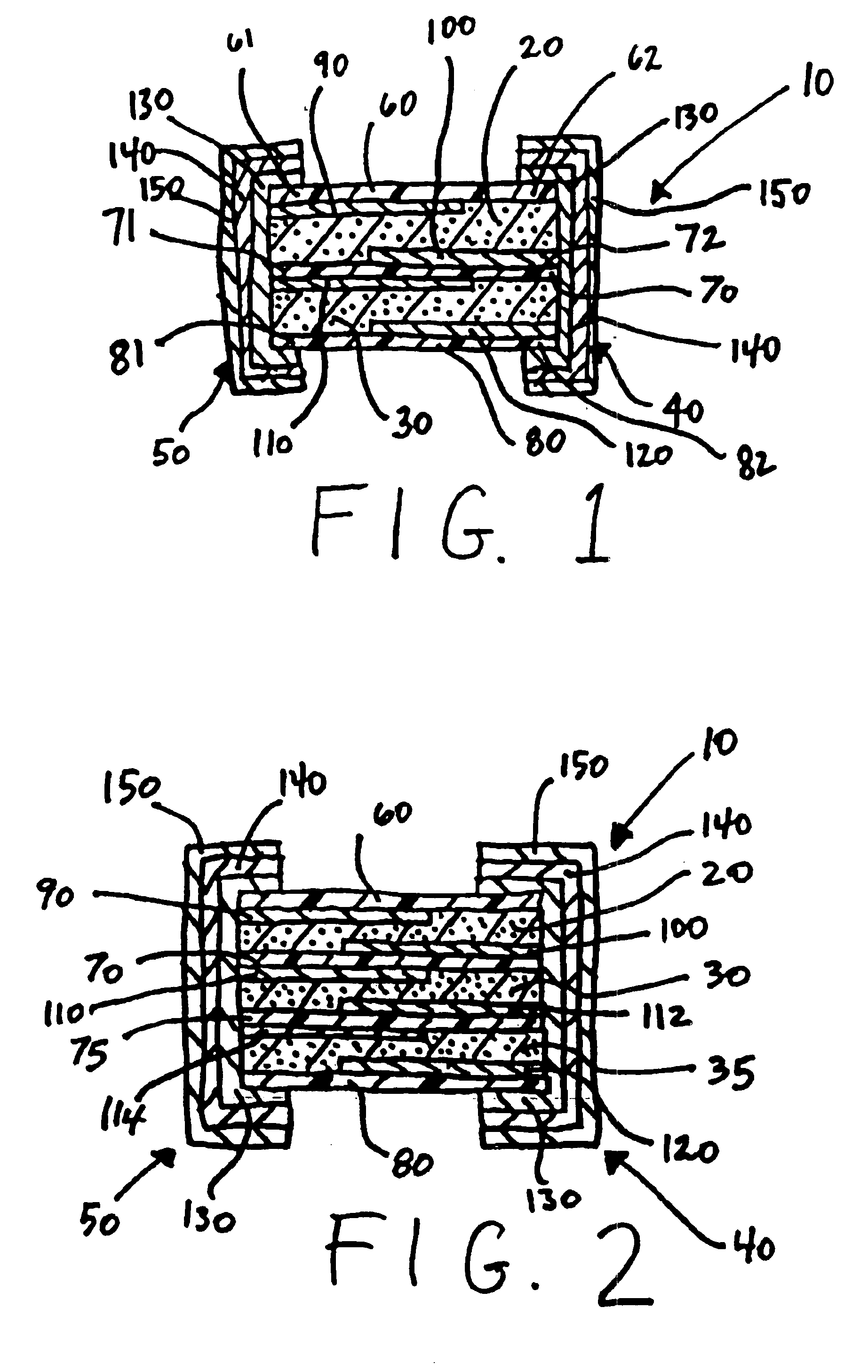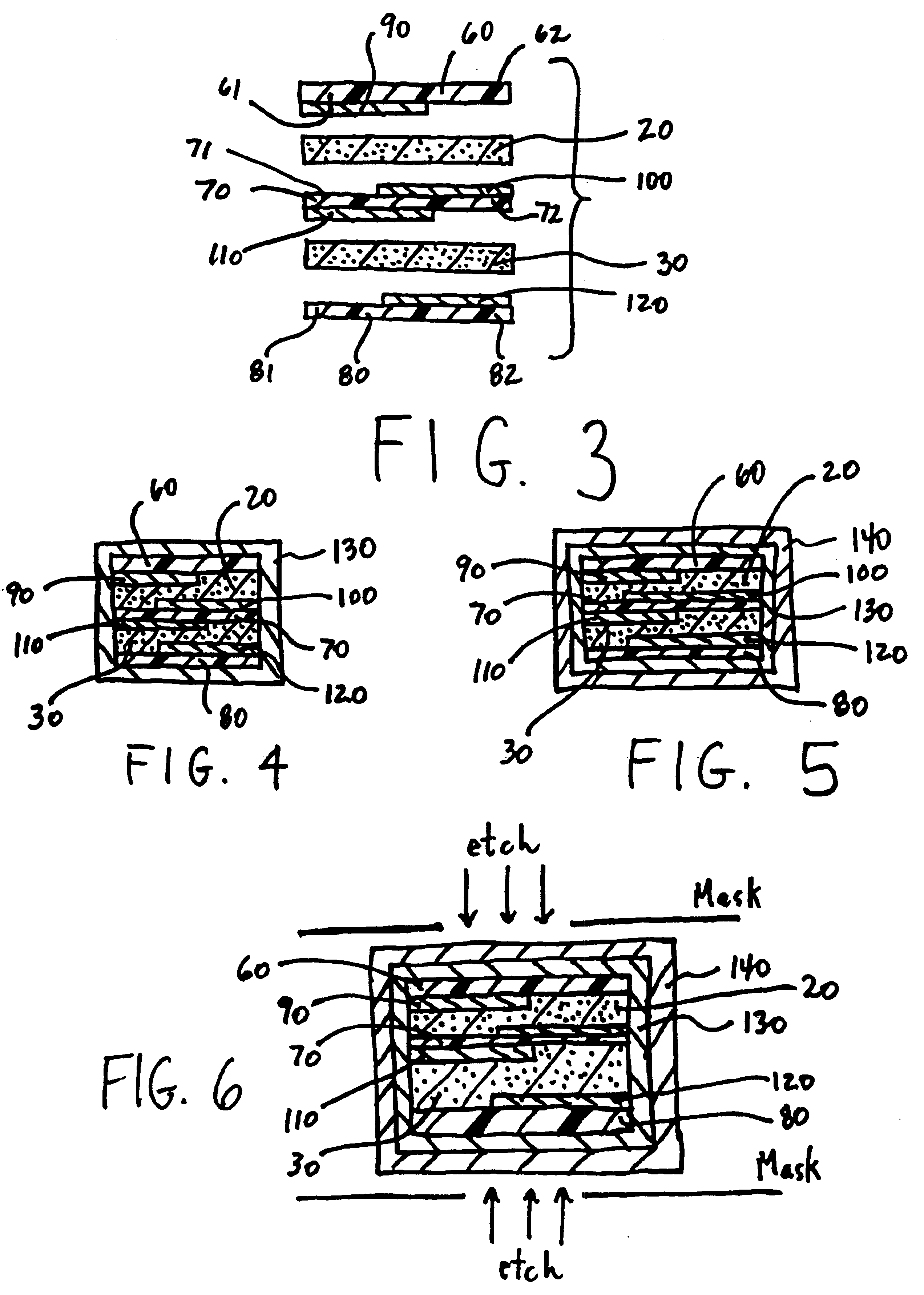PTC circuit protection devices
a protection device and circuit technology, applied in the direction of resistor chip manufacture, resistor details, positive temperature coefficient thermistors, etc., can solve the problems of large power dissipation of ptc devices, greater heat generation rate of devices, and unstable ptc devices. , to achieve the effect of more susceptible to mounting
- Summary
- Abstract
- Description
- Claims
- Application Information
AI Technical Summary
Benefits of technology
Problems solved by technology
Method used
Image
Examples
first embodiment
FIG. 1 illustrates an electrical device 10 according to the present invention. The device 10 is comprised of first and second PTC elements 20,30 electrically connected in parallel between first and second end terminations 40,50. The first and second PTC elements 20,30 are interposed between first, second and third substrates 60,70,80.
Generally, the PTC elements 20,30 are composed of a PTC composition comprised of a polymer component and a conductive filler component. The polymer component may comprise a polyolefin having a crystallinity of at least 40%. Suitable polymers include polyethylene, polypropylene, polybutadiene, polyethylene acrylates, ethylene acrylic acid copolymers, and ethylene propylene copolymers. In a preferred embodiment, the polymer component comprises polyethylene and maleic anhydride, e.g., Fusabond™ brand manufactured and sold by DuPont. The conductive filler is dispersed throughout the polymer component in an amount sufficient to ensure that the composition ex...
second embodiment
Referring now to FIG. 2, in a second embodiment the device 10 is comprised of three PTC elements 20,30,35 laminated between four substrates 60,70,75,80. The additional substrate, illustrated in FIG. 2 by reference numeral 75, has a similar offset electrode configuration as substrate 70, i.e., a first electrode 112 is formed on a first (top) surface and extends to one end but not the other end of the substrate 75, and a second electrode 114 is formed on a second surface (bottom) and extends to the opposite end of the substrate 75 as does the first electrode 112. In the embodiment illustrated in FIG. 2, the first end termination 40 is in direct contact with electrodes 100,112,120 but not electrodes 90,110,114, while the second end termination 50 is in direct contact with electrodes 90,110,114 but not electrodes 100,112,120. Accordingly, the PTC elements 20,30,35 are electrically connected in parallel between the wrap-around end terminations 40,50 and provide the device 10 with a highe...
PUM
 Login to View More
Login to View More Abstract
Description
Claims
Application Information
 Login to View More
Login to View More - R&D
- Intellectual Property
- Life Sciences
- Materials
- Tech Scout
- Unparalleled Data Quality
- Higher Quality Content
- 60% Fewer Hallucinations
Browse by: Latest US Patents, China's latest patents, Technical Efficacy Thesaurus, Application Domain, Technology Topic, Popular Technical Reports.
© 2025 PatSnap. All rights reserved.Legal|Privacy policy|Modern Slavery Act Transparency Statement|Sitemap|About US| Contact US: help@patsnap.com



